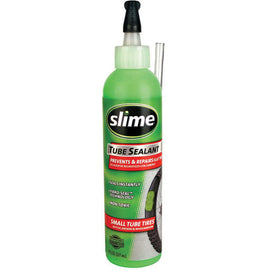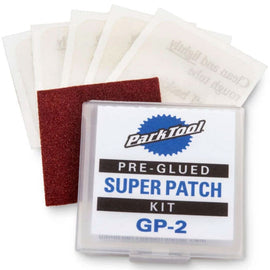Inner Tube Valve Types 101
Needing to know more about inner tube valve types? Then look no further. Here is a quick fire run down of the most common bike valve types you'll encounter. All the time we have people wanting to know what's the difference between a Schrader valve and a presta valve? Why use a presta valve tube? Why use a Schrader valve tube? Well, here we hope to answer all those questions and more.

1. Schrader Valve

Features of a Schrader Valve:
The Schrader valve type is the most common amongst inner tubes. They are robust, inexpensive and proven on a variety of applications. The main characteristics are the wide shaft, usually about 36-40mm long and either have a rubber sleeve up to the valve thread or are fully threaded for a lock nut. Also in the Schrader valve type category you can get extra long ones which go to approx. 48-50mm. Other names for the Schrader valve are the 'car type valve', the 'auto valve' and even sometimes the 'fat valve'! Schrader valves are very robust too (great for kids bikes and downhill bikes!).
The removable valve core is a spring loaded mechanism with a one way air flow valve. This makes it super simple to inflate. When the pump head is attached, you tighten the lever lock and inside it has a small pin that presses against the pin inside the Schrader Valve core. This depresses it, opening the air way, allowing you inflate your tube.
Advantages of a Schrader Valve:
- Robust
- Easy to use / inflate
- Low cost
Disadvantages of a Schrader Valve:
- Can't be used on thin rims
- Weight and counterbalance compromise over Presta Valves
- Spring loaded valve core can clog up and fail
How to Inflate a Schrader Valve:
- Place a Schrader pump head over the threads until you hear air escape
- Lock the pump head onto the valve with the lock lever
- Inflate to the tyre pressure as stated on the side of the tyre sidewall
- Unlatch the lever and remove the pump head. Easy!
2. Presta Valve

The presta valve (or 'Sclaverand' valve as it is also known) in is a whole other creation indeed when compared to the Schrader valve. Created in 1911 by a chap called Philip Strauss (creator of Zefal). It was purposely designed for bikes and as such has a wider range of applications.
Features of a Presta Valve:
Most notably the Presta Valve is much thinner in diameter compared to the Schrader Valve. They are 6mm in diameter (Schrader's are 8mm). You'll find presta valves on most road road racing bikes because they require thinner rims. A thin rim can't have a giant schrader shaped hole cut into it because it weakens the integrity and strength of the rim so the Presta is the solution to super thin aero rims.
Presta valve types come in a whole variety of lengths, again due to the depth of rims. A thin rim means you need depth to add in the strength in another place (see mechanical engineering as to why! Sadly we can't cover that here). Sizes go from 36mm right up to 80mm with the regular size being around 40mm. However, if your valve is too short for deep section rims, you can simply add a valve extender to help you out.
Advantages of a Presta Valve
- Designed for thin / racing / aero bike rims
- Approx. 4-5 grams lighter than Schrader (less requirement for counterbalancing)
- Reliable / high pressure valve cores less likely to fail vs. spring loaded ones
Disadvantage of a Presta Valve
- Delicate valve core / easy to damage when inflating vs. a Schrader valve
- Less reliable at lower pressure uses / susceptible to valve tear off
- Tricker to inflate compared to Schrader due to no spring loaded valve core
How to inflate a presta valve
- Check the lock nut is hand tight (this protects the valve from damage when inflating)
- Loosen top nut (be careful not to loosen the valve core)
- Attach a presta pump head and tighten the pump lever
- Inflate to the level(s) shown on the side of the tyre
- Remove the pump head by un-latching the pump head lever
- Hand tighten the valve head, replace dust cap and away you go!
3. Woods Valve

The Woods valve (aka the English valve, the Dunlop valve and the Dutch valve) was invented by John Dunlop (improved by C.H. Woods). It's the most common valve type in the world, yet yet it's lesser known in some countries.
Features of a Woods Valve:
These valves are something of a legacy valve in many ways. They are a kind of hybrid of a Schrader and a presta in some ways. They are a similar size of Schrader valves but with the inflation style of a presta. You don't see them very much these days in certain countries due to being superseded in design by the Schrader and Presta styles. However, they are widely used in some European and Asian countries. All in all most tend to swap these out for Schrader valves. (Inflating a Woods valve is the same as a presta, please see above).
4. Bent Valves

You what? Bent valves. Or angled valves to some. These use a Schrader type connection but are angled for easy inflation on smaller diameter wheels. Anything under 10 inches in diameter and you'll likely encounter a 90 degree angled valve. Also there is the 45 degree valve which you'll see on many 12 inch applications. The purpose of the bend is to allow easier access for inflation. You'll see these on everything from prams, sack trucks, mobility scooters, wheelbarrows and more. (Inflation of a bent valve inner tube is the same as a Schrader valve, please see above).
A. Anatomy of a Presta Valve

Here is the complete break down of a presta valve. Here you can see how a presta valve looks when open (ready for inflation). Next you can see the Presta Valve Closed. Finally, you can see the Presta Valve stem with the valve core removed totally. It's a great way to understand how it all builds together and what you're looking at when trying to problem solve with a presta valve.
B. Anatomy of a Schrader Valve

Here you can see our break down of the Schrader valve. It shows the components that make it a schrader valve. Plus it shows it in both guises; the threaded and un-threaded schrader valve stem types.
C. Anatomy of a Woods Valve

Finally, here is our diagram of a woods (dunlop) valve. You can really see the similarities and differences between the valves when they are all together and broken down in the same format.
Inner Tube Valve Abbreviations:
Ever wondered what the abbreviations for cycle valve types mean? Sometimes they can be key in identifying the valve type associated with a specific valve. Below are the most common ones, plus a couple to look out for as they can be mis-interpreted easily!
- AV = Auto Valve (Schrader Valve)
- FV = French Valve (Presta Valve)
- DV = Dunlop Valve
- WV = Woods Valve
- RV = Regina Valve
- BSV = Bent Schrader Valve (Angled Valve)
- PV = Presta Valve (not Presto Valve!)
Valve Abbreviation Outliers:
- SV means Sclaverand Ventil in German (Presta Valve)
- SV means Schrader Valve in English
Hopefully these main types of valve help you identify which valve type you need when buying a new inner tube. We could go on to the Regina valve (or Italian valve) but that's a whole other blog post. If you have any questions or are unsure with which valve type you need please don't hesitate to get in touch, we're happy to help.




